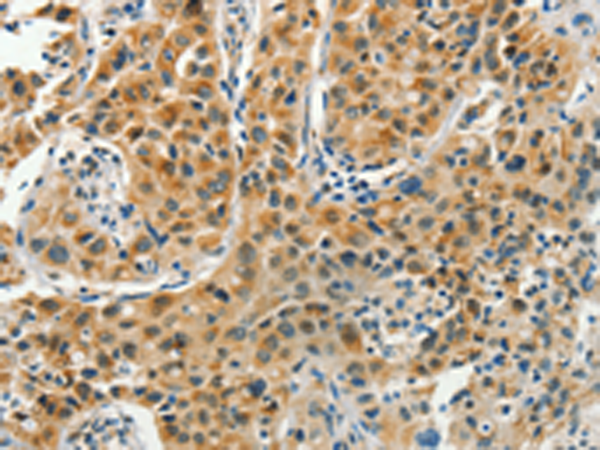


| WB | 咨询技术 | Human,Mouse,Rat |
| IF | 咨询技术 | Human,Mouse,Rat |
| IHC | 1/25-1/100 | Human,Mouse,Rat |
| ICC | 技术咨询 | Human,Mouse,Rat |
| FCM | 咨询技术 | Human,Mouse,Rat |
| Elisa | 1/2000-1/5000 | Human,Mouse,Rat |
| Aliases | HKE2; KE-2; PFD6; H2-KE2 |
| WB Predicted band size | 14 kDa |
| Host/Isotype | Rabbit IgG |
| Antibody Type | Primary antibody |
| Storage | Store at 4°C short term. Aliquot and store at -20°C long term. Avoid freeze/thaw cycles. |
| Species Reactivity | Human, Mouse |
| Immunogen | Synthetic peptide of human PFDN6 |
| Formulation | Purified antibody in PBS with 0.05% sodium azide and 50% glycerol. |
+ +
以下是关于PFDN6抗体的3篇文献示例(注:部分内容为示例性概括,实际文献请通过学术数据库查询):
1. **文献名称**: "Prefoldin 6 (PFDN6) is required for the progression of hepatocellular carcinoma via mTORC1 signaling"
**作者**: Li Y, et al.
**摘要**: 研究利用PFDN6抗体通过免疫组化和Western blot分析,发现PFDN6在肝癌组织中高表达,并通过调控mTORC1信号通路促进肿瘤细胞增殖和侵袭。
2. **文献名称**: "PFDN6 interacts with misfolded proteins in neurodegenerative disease models"
**作者**: Smith J, et al.
**摘要**: 通过免疫共沉淀(使用PFDN6抗体)和质谱分析,揭示了PFDN6在阿尔茨海默病模型中与错误折叠的Tau蛋白相互作用,可能参与病理蛋白的聚集过程。
3. **文献名称**: "CRISPR screening identifies PFDN6 as a critical regulator of mitochondrial function"
**作者**: Wang X, et al.
**摘要**: 研究利用CRISPR-Cas9筛选结合PFDN6抗体验证,发现PFDN6缺失导致线粒体功能紊乱,提示其在细胞能量代谢中的潜在作用。
如需具体文献,建议通过PubMed或Google Scholar以“PFDN6 antibody”或“PFDN6 function”为关键词检索最新研究。
The PFDN6 antibody targets the Prefoldin subunit 6 (PFDN6), a component of the molecular chaperone complex prefoldin. Prefoldin, composed of six subunits (PFDN1-6), assists in nascent protein folding by binding partially unfolded polypeptides and delivering them to the cytosolic chaperonin complex (CCT) for proper folding, particularly for cytoskeletal proteins like actin and tubulin. PFDN6. also known as CGI-101 or HINAP6. is crucial for maintaining proteostasis and cellular function. Dysregulation of prefoldin complexes has been linked to diseases, including cancers and neurodegenerative disorders, where protein misfolding or aggregation occurs.
Antibodies against PFDN6 are essential tools for studying its expression, localization, and interactions in biological systems. They are widely used in techniques such as Western blotting, immunoprecipitation, and immunofluorescence to investigate PFDN6's role in cellular processes, disease mechanisms, or its potential as a biomarker. Commercially available PFDN6 antibodies are typically validated for specificity using knockout controls or siRNA-mediated silencing. Researchers also employ them to explore correlations between PFDN6 levels and pathological conditions, such as tumor progression or neuronal degeneration. Due to prefoldin's conserved structure, cross-reactivity with orthologs in model organisms (e.g., mice, zebrafish) is often confirmed, enabling translational studies.
×